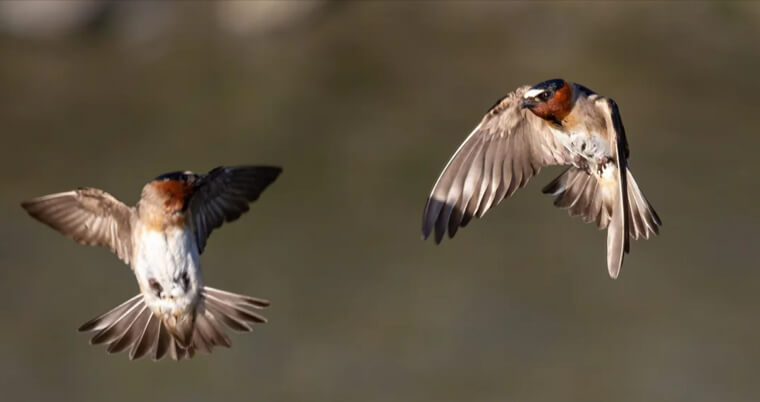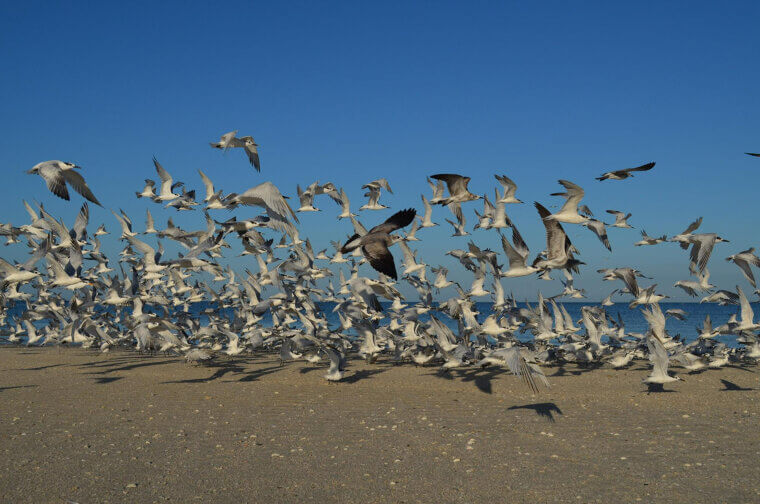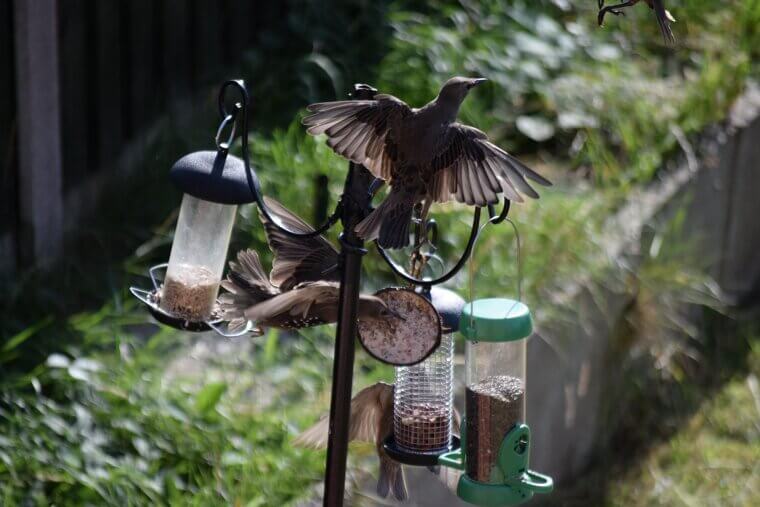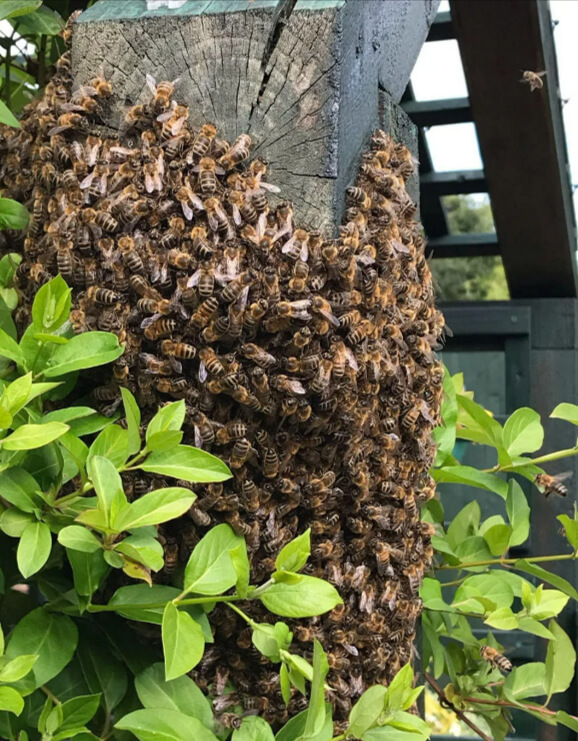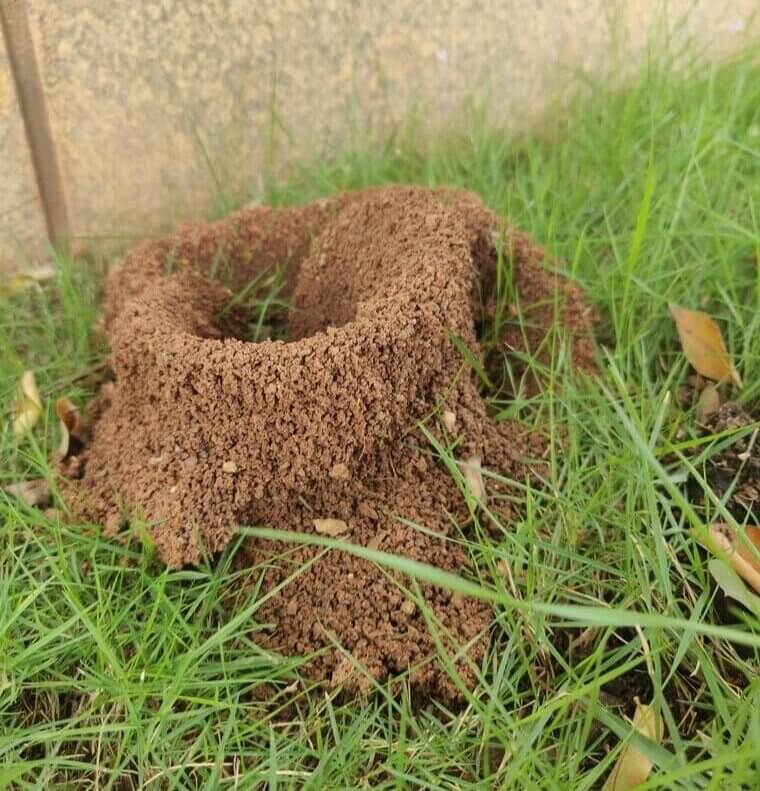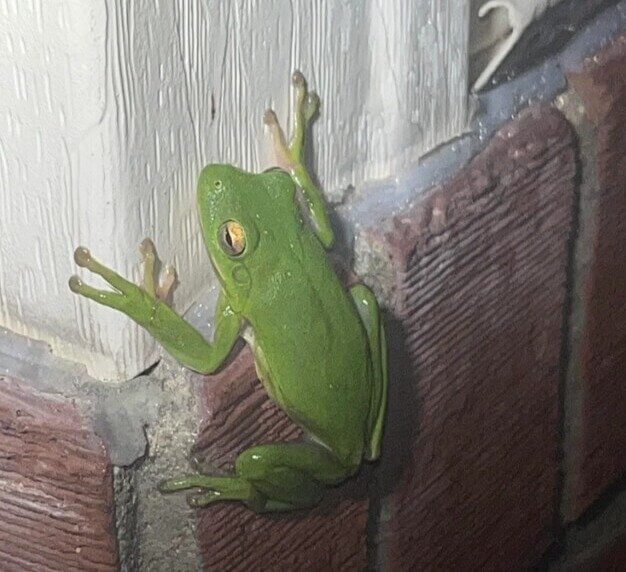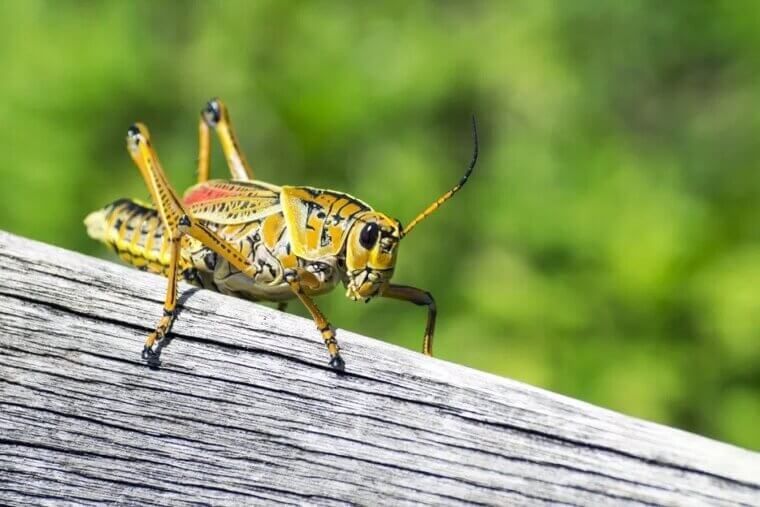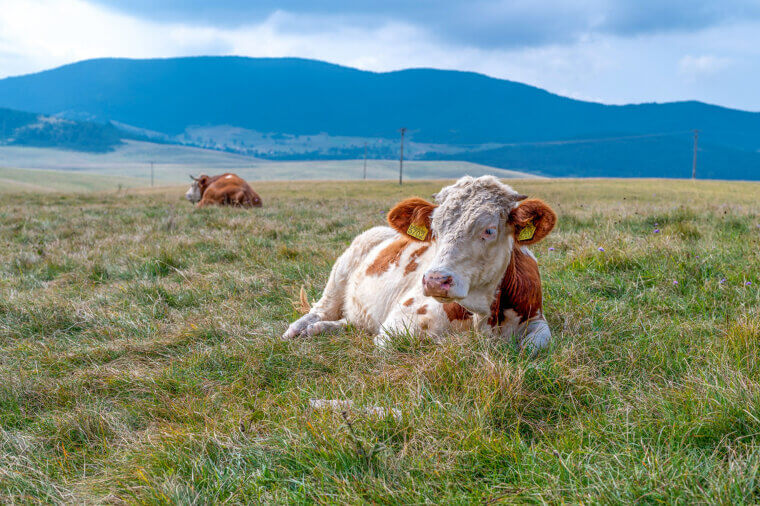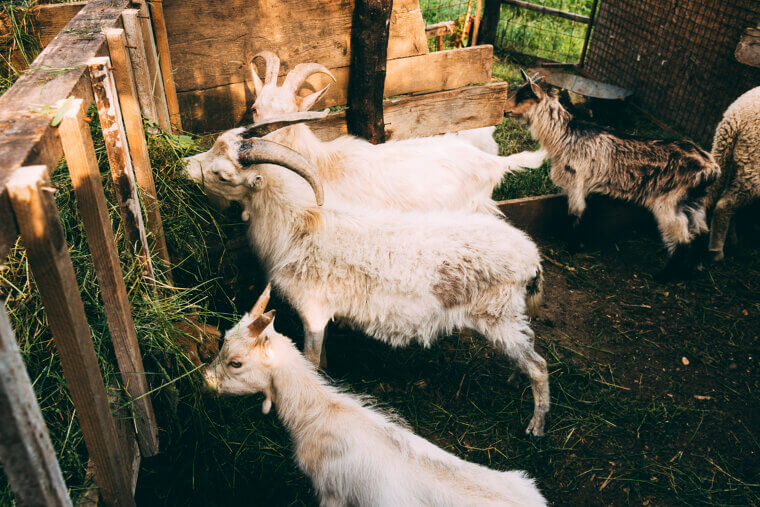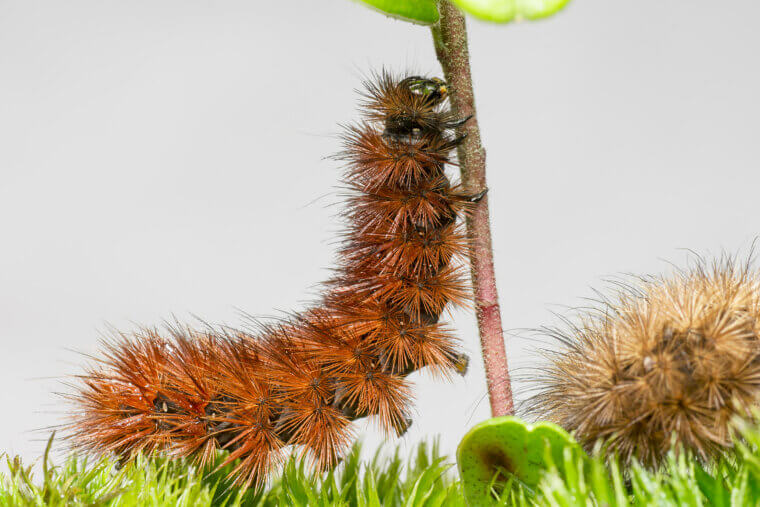Swallows & Swifts Flying Low
The sight of swallows and swifts flying low over fields and roads serves as the neighborhood’s earliest forecast that rain is approaching. Folklore says “low‑flying swallows mean rain,” and science agrees in spirit; humid, unstable air keeps insects near the ground, and birds follow the buffet as pressure falls ahead of fronts. Watch for this on sultry summer days, a few hours before storms. Beware of false alarms: gusty crosswinds, hills, or traffic turbulence can temporarily push birds down. Farmers have long treated barn swallows as living barometers, penciling notes beside planting and haying dates for generations.
Gulls & Seabirds Moving Inland
When gulls abandon the surf and loiter over parking lots and plowed fields, coastal folks start tying things down. Old sayings wink, “Gulls on land, gale at hand,” and physics supplies the nudge: falling pressure, steepening chop, and turbulent marine air push seabirds toward calmer inland layers before strong lows or tropical systems. Read the signal with caution; landfills, fishing boats, and French fries also attract crowds. Harbor diaries have tracked these shifts for ages, turning gull commutes into squall clues and small, practical decisions. Flight lines often change hours ahead.
Songbird Feeder Frenzy
If your feeder looks like rush hour, chickadees, titmice, and finches elbow‑to‑wing, a front may be tiptoeing closer. The folk rule says, “Birds eat up; storms speed up,” and biology agrees: falling barometric pressure cues small songbirds to bank calories before wind and wet. You’ll often see the binge six to twenty‑four hours ahead of rain or snow. Fair warning, migration pulses can mimic the surge, so check calendars. Backyards now act like tiny weather stations, their notebooks complementing regional observations. Note wind shifts, cloud bases, and feeder quieting after onset, too.
Honey Bees Hugging the Hive
When honeybees throttle back foraging and guard bees bustle at the entrance, the colony is reading the weather. Old-timers quip, “Bees stay home; storms roam.” Low pressure and rising winds make flight costly, so workers conserve energy, seal cracks with propolis, and cluster closer to the brood. Expect this behavior to occur hours to half a day before spring through fall fronts. Don’t misread a nectar dearth; flowers closing or drought can also thin traffic. Before the sky closes on their hives and suits, apiarists exchange barometer tales like recipes, adjusting inspections accordingly.
Ants Sealing Mounds
Ants are tiny civil engineers with a remarkable ability to navigate their environment. Before a soaker, colonies build higher rims, plug entrances, or carry brood uphill to drier chambers. The folklore rhyme “High ant walls, heavy rain calls,” and studies echo it: rising humidity and falling pressure cue flood defenses in many species. You’ll notice the bustle ahead of prolonged rain or tropical feeder bands. Interpret locally; species, soil texture, and recent disturbances change the playbook. Field guides and naturalists flag this as classic pre‑storm behavior; gardeners learn to read the traffic patterns like road signs.
Frogs Turning Up the Chorus
Tree frogs and toads turning up the volume at dusk are nature’s push notification. Folklore says, “Loud frogs, wet logs,” and there’s biology behind the chorus: warm, humid air carries sound well and primes amphibians for breeding, conditions that often arrive with or just ahead of rain. You’ll notice the serenade most from late spring through muggy summer evenings. Beware false alarms near irrigated lawns or active pond fountains; artificial humidity can spark karaoke. Farmers once penciled planting dates beside frog song, using the night choir like a living calendar.
Crickets’ Chirp Count
Crickets turn the night into a thermometer, not a rain gauge. Camp lore teaches you to count chirps; science refines it with Dolbear’s law, linking chirp rate to air temperature as metabolism speeds with warmth. Try it after dark for a quick, gear‑free spot‑check. Just remember species, humidity, and the cricket’s age can skew the math, so treat the number as a friendly approximation. Folklore gets the headline right, though: faster chirps mean warmer nights. It’s backyard physics you can hear, a field soundtrack that doubles as casual weather trivia everywhere.
Cattle Lying Down & Tails to Wind
When cows lie down across the pasture with rumps to the breeze, herders quietly check the forecast. The rhyme goes, “Cows on the ground, rain soon around,” and physiology helps explain it: rising humidity and wind encourage rumination, while tail‑to‑wind posture reduces chill and spray. Expect the signal on blustery, showery days around passing fronts. Don’t overread a herd’s routine; rest‑graze cycles can mimic weather warnings. Still, generations of pasture watching turned cattle into comfortable barometers, a low‑tech, high‑context readout that flickers to life before radar lights up on stormy horizons.
Sheep & Goats Huddling
Sheep and goats bunching in a lee hollow, noses pointed downwind, are small woolly weather stations. The proverb says, “Flocks that huddle, skies that puddle,” and instinct backs it up: as wind rises and air cools ahead of fronts, flocking conserves warmth and reduces exposure. Watch for it on upland ridges and coastal hills before squalls. Caveat: predators or herding dogs can cause the same clustering, so read the whole scene. Shepherd sayings carry wind wisdom, tuned by centuries of grazing where shelter and storms negotiate every afternoon in concert.
Sharks & Fish Diving Deeper
Before big cyclones, tagged sharks and many fish slip to deeper water, leaving the shallows oddly quiet. Veterans noticed long ago; telemetry now shows why. As barometric pressure drops and chaotic surf disorients swim bladders while churning the upper layer, animals move down to calmer strata. It’s a useful cue on tropical coasts hours to days ahead, though invisible without tags or sonar. Fishermen still tell the story; data finally nodded along. Nature battening hatches underwater is weather wisdom, translated from nets and docks into graphs and shared dashboards for communities.
Woolly Bear Caterpillars’ Stripes
Woolly bear caterpillars parade fuzzy black and orange bands each autumn, inspiring bold forecasts at parades and school fairs. Folklore claims a wider orange stripe means a milder winter; science shrugs politely. Bandwidth mostly reflects species, age, and the season the larva has already lived through, not the one ahead. Treat them as charming mascots, not meteorologists. Still, the tradition sticks because it’s memorable, local, and fun. Town festivals crown official caterpillars, kids practice field biology, and everyone learns that weather prediction is harder than reading fashionable stripes each fall.

